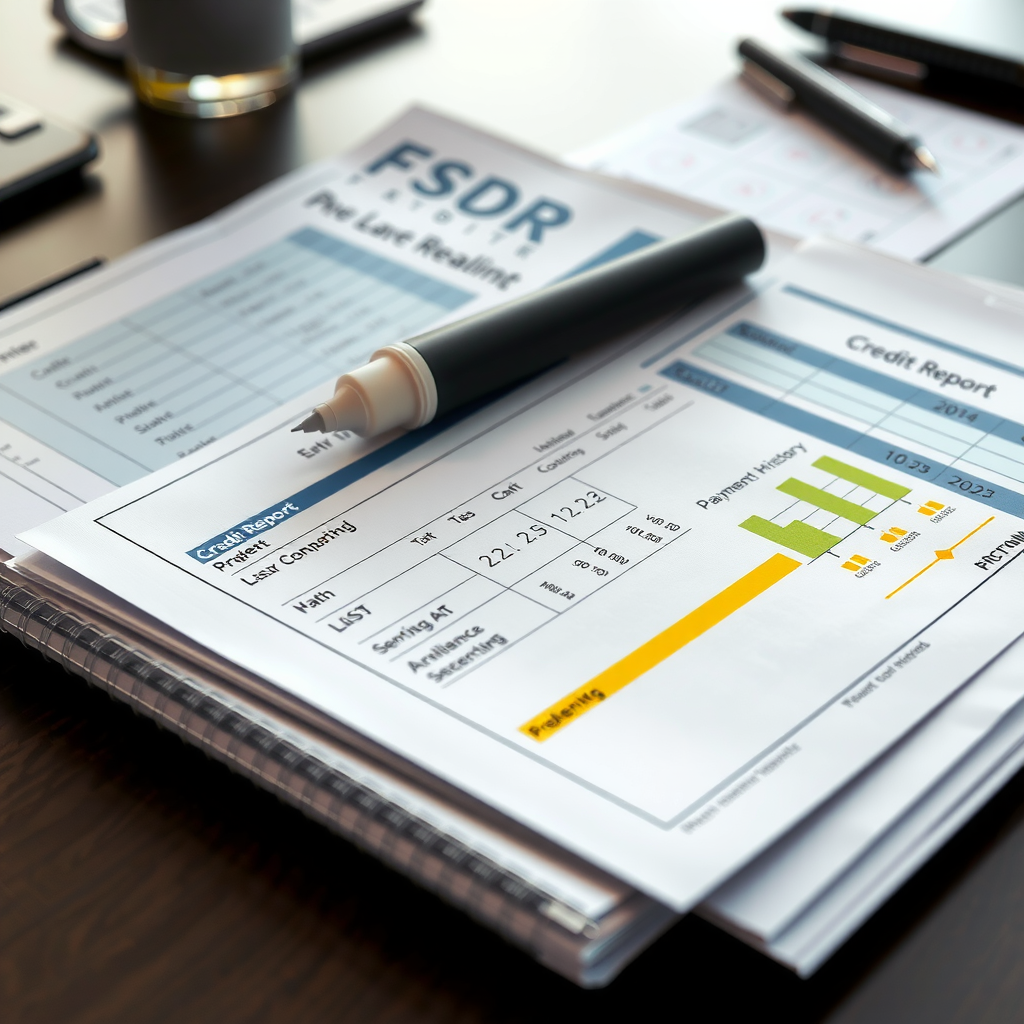Published on September 15, 2024
Rebuilding Your Credit: A Comprehensive Guide to Financial Recovery
Practical strategies for restoring creditworthiness and creating a sustainable path to financial stability after economic setbacks
Economic setbacks can happen to anyone, regardless of how carefully you manage your finances. Whether due to unexpected medical expenses, job loss, business failure, or other unforeseen circumstances, damaged credit can feel like an insurmountable obstacle. However, with the right strategies and commitment, rebuilding your creditworthiness is entirely achievable. This comprehensive guide will walk you through the essential steps to restore your financial credibility and create a sustainable recovery roadmap.
Understanding that credit recovery is a journey, not a destination, is crucial to maintaining motivation throughout the process. The path to financial stability requires patience, discipline, and a clear understanding of how credit systems work. By following proven strategies and maintaining consistent positive financial behaviors, you can gradually rebuild your credit profile and regain access to favorable lending terms.
Understanding Your Credit Report: The Foundation of Recovery
Before you can effectively rebuild your credit, you must thoroughly understand your current credit situation. Your credit report is a detailed record of your financial history, including payment patterns, outstanding debts, credit inquiries, and public records. Obtaining and analyzing this document is the critical first step in your recovery journey.
Federal law entitles you to one free credit report annually from each of the three major credit bureaus: Equifax, Experian, and TransUnion. Request all three reports simultaneously to get a complete picture of your credit profile. Carefully review each report for accuracy, as errors are surprisingly common and can significantly impact your credit score.
When analyzing your credit report, pay particular attention to several key areas. First, verify that all personal information is correct, including your name, address, and employment history. Second, examine each account listed to ensure you recognize it and that the payment history is accurate. Third, look for any negative items such as late payments, collections, charge-offs, or bankruptcies. Finally, check for unauthorized inquiries that might indicate identity theft.
If you discover errors, dispute them immediately with the credit bureau. The Fair Credit Reporting Act requires bureaus to investigate disputes within 30 days. Provide clear documentation supporting your claim, and follow up persistently until the error is corrected. Removing inaccurate negative items can provide an immediate boost to your credit score and accelerate your recovery timeline.
Strategic Debt Restructuring: Creating a Manageable Payment Plan
Once you understand your credit situation, the next step is developing a realistic debt restructuring strategy. This involves prioritizing your debts, negotiating with creditors, and creating a payment plan that fits your current financial capacity while demonstrating your commitment to meeting your obligations.
Begin by categorizing your debts into three groups: secured debts (mortgages, car loans), priority unsecured debts (taxes, child support), and general unsecured debts (credit cards, medical bills, personal loans). Secured debts should typically receive priority since defaulting could result in losing essential assets. However, ensure you're also addressing priority unsecured debts to avoid legal consequences.
"The key to successful debt restructuring is honest communication with creditors. Most lenders would rather work with you to create a modified payment plan than pursue collection actions."
— Financial Recovery Principle
When negotiating with creditors, approach the conversation professionally and prepared. Have a clear understanding of your income, expenses, and what you can realistically afford to pay. Many creditors offer hardship programs that can temporarily reduce payments, lower interest rates, or waive fees. Be honest about your situation and demonstrate your commitment to repaying what you owe.
Consider debt consolidation if you have multiple high-interest debts. This strategy involves combining several debts into a single loan with a lower interest rate, simplifying your payments and potentially reducing your overall interest costs. However, be cautious about consolidation loans that extend your repayment period significantly, as you may end up paying more in total interest despite the lower rate.
Another effective approach is the debt avalanche or debt snowball method. The avalanche method focuses on paying off high-interest debts first while making minimum payments on others, saving you funds on interest over time. The snowball method targets the smallest debts first, providing psychological wins that can maintain motivation. Choose the approach that best fits your personality and financial situation.
Building Positive Payment History: The Cornerstone of Credit Recovery
Payment history is the single most important factor in your credit score, accounting for approximately 35% of the calculation. Establishing and maintaining a consistent pattern of on-time payments is essential for rebuilding your creditworthiness. Even if you can only make minimum payments initially, consistency demonstrates reliability to future lenders.
Set up automatic payments for all your bills to ensure you never miss a due date. Most banks and creditors offer this service free of charge. Schedule payments a few days before the due date to account for processing time. If automatic payments aren't possible, create calendar reminders and establish a specific day each month for reviewing and paying bills.
If you're struggling to make payments on existing accounts, consider opening a secured credit card. These cards require a cash deposit that serves as your credit limit, making them accessible even with damaged credit. Use the card for small, regular purchases and pay the balance in full each month. This demonstrates responsible credit use and gradually rebuilds your payment history.
Another strategy is becoming an authorized user on someone else's credit card account. If a family member or trusted friend with good credit adds you as an authorized user, their positive payment history may be reflected on your credit report. However, ensure the primary cardholder maintains excellent payment habits, as negative activity could also affect your credit.
Credit-builder loans, offered by some credit unions and community banks, provide another avenue for establishing positive payment history. These loans hold the borrowed amount in a savings account while you make payments. Once the loan is paid off, you receive the funds. The lender reports your payments to credit bureaus, helping build your credit while you save funds.
Understanding Recovery Timelines: Setting Realistic Expectations
Credit recovery is not an overnight process, and understanding realistic timelines helps maintain motivation and prevents discouragement. The time required to rebuild your credit depends on several factors, including the severity of negative items, your current credit score, and how consistently you implement positive financial behaviors.
Minor negative items, such as a single late payment, typically have less impact and fade more quickly. A 30-day late payment might affect your score for up to two years, though its impact diminishes over time. More serious issues like collections, charge-offs, or bankruptcies remain on your credit report for seven to ten years, though their impact also decreases as they age and you establish positive payment patterns.
Most people see noticeable credit score improvements within three to six months of implementing consistent positive behaviors. However, achieving a good or excellent credit score typically requires 12 to 24 months of sustained effort. The key is focusing on controllable factors: making all payments on time, keeping credit utilization low, and avoiding new negative items.
Track your progress by monitoring your credit score monthly through free services offered by many credit card companies and financial institutions. Celebrate small victories, such as removing an error from your report or seeing your score increase by 20 points. These milestones provide motivation to continue your recovery efforts.
Remember that negative items automatically fall off your credit report after their designated time period. A Chapter 7 bankruptcy remains for ten years, while most other negative items disappear after seven years. As these items age and eventually disappear, combined with your positive payment history, your credit score will naturally improve.
Creating Sustainable Financial Stability: Beyond Credit Recovery
While rebuilding your credit is important, true financial recovery requires addressing the underlying issues that led to credit problems in the first place. Creating sustainable financial stability involves developing healthy money management habits, building emergency savings, and establishing systems that prevent future financial crises.
Start by creating a realistic budget that accounts for all income and expenses. Track your spending for at least one month to understand where your funds goes. Identify areas where you can reduce expenses and redirect those funds toward debt repayment and savings. Use budgeting apps or spreadsheets to maintain visibility into your financial situation.
Building an emergency fund is crucial for preventing future credit problems. Start small, aiming for $500 to $1,000 initially, then gradually work toward three to six months of living expenses. This financial cushion protects you from unexpected expenses that might otherwise force you to rely on credit or miss payments.
Develop a diversified approach to financial stability that includes multiple income streams when possible, adequate insurance coverage, and long-term financial planning. Consider working with a certified financial planner or credit counselor who can provide personalized guidance based on your specific situation. Many nonprofit organizations offer free or low-cost financial counseling services.
Educate yourself continuously about personal finance topics. Read books, attend workshops, and follow reputable financial education resources. Understanding concepts like compound interest, investment basics, and tax strategies empowers you to make informed decisions that support long-term financial health. Knowledge is one of your most valuable assets in maintaining financial stability.
Moving Forward with Confidence
Rebuilding your credit after economic setbacks is challenging but entirely achievable with commitment, patience, and the right strategies. By thoroughly understanding your credit report, strategically restructuring debt, establishing consistent positive payment patterns, maintaining realistic expectations about timelines, and focusing on long-term financial stability, you can successfully restore your creditworthiness and create a secure financial future.
Remember that credit recovery is a marathon, not a sprint. Focus on progress rather than perfection, and don't let setbacks derail your efforts. Each on-time payment, each debt reduced, and each positive financial decision moves you closer to your goals. The habits you develop during this recovery process will serve you well throughout your financial life.
Your financial past does not define your financial future. With determination and consistent effort, you can rebuild your credit, restore your financial stability, and create the prosperous future you deserve. Take the first step today, and trust the process as you work toward complete financial recovery.






